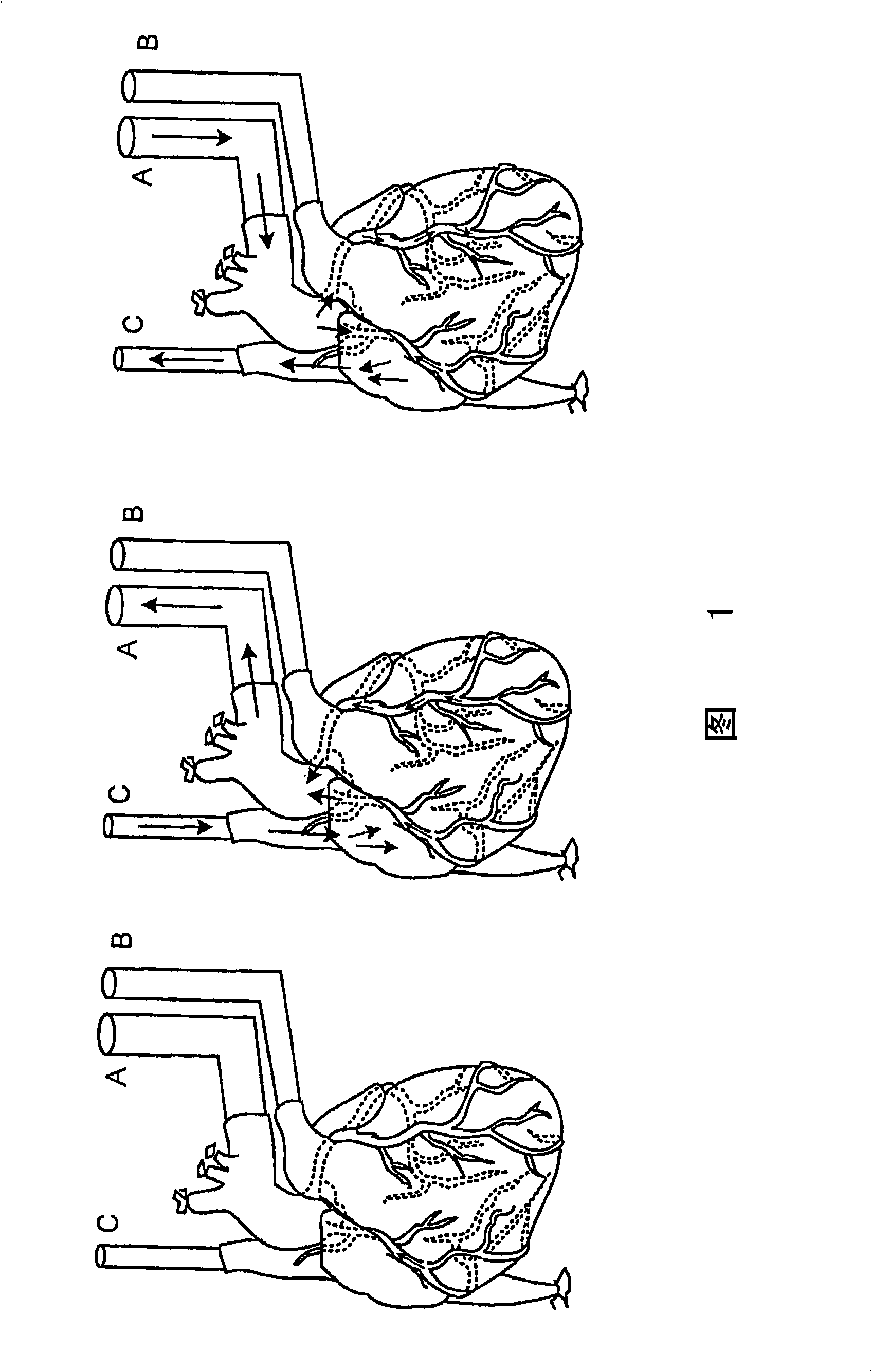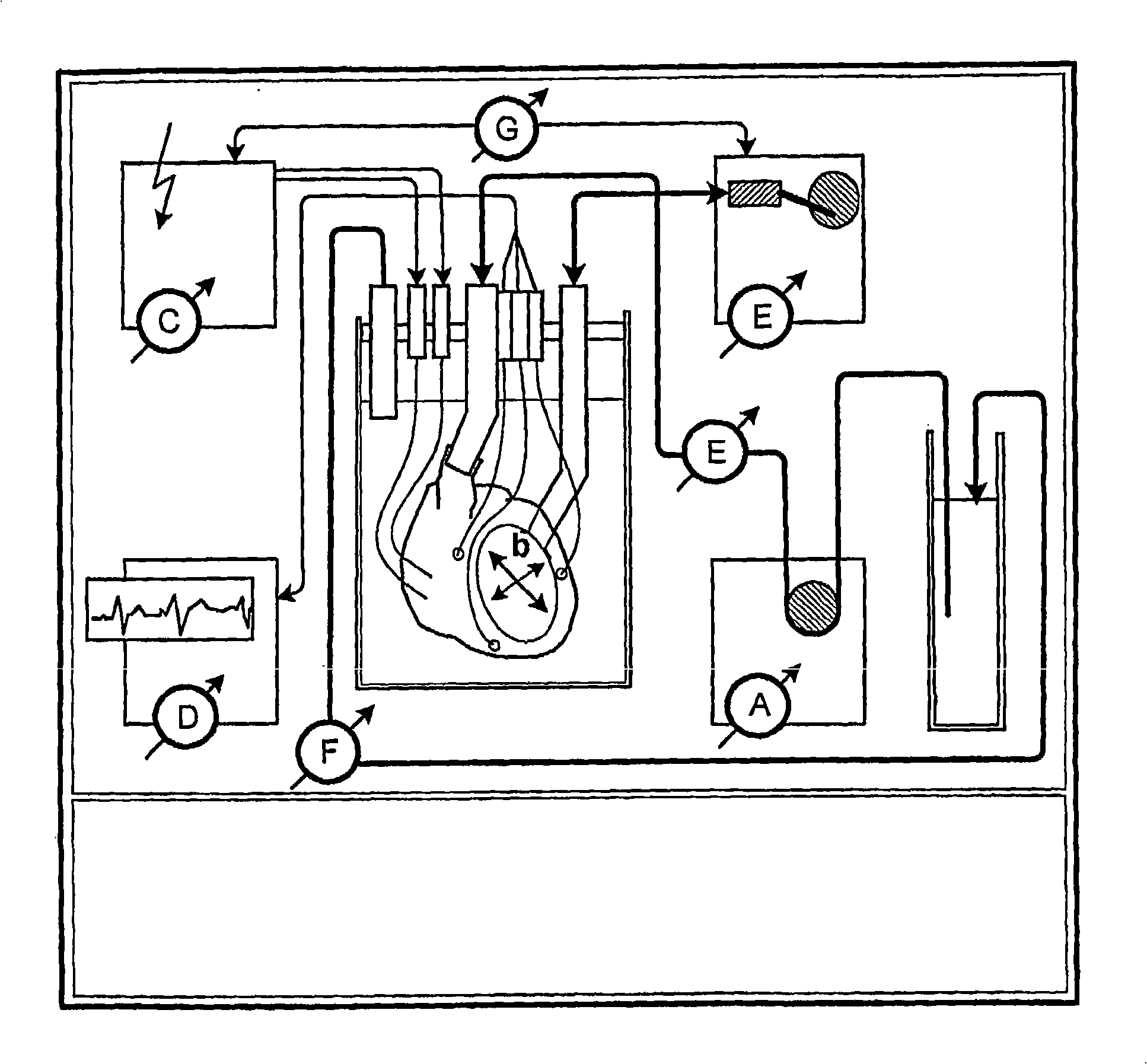Decellularization and recellularization of organs and tissues
A decellularized and organ-based technique, applied in the field of organs and tissues, can solve the problems of not having ideal matrix structure, not showing organs or tissues, etc.
- Summary
- Abstract
- Description
- Claims
- Application Information
AI Technical Summary
Problems solved by technology
Method used
Image
Examples
Embodiment 1
[0057] Example 1-Preparation of solid organs for decellularization
[0058] In order to avoid the formation of postmortem thrombus, the donor rats were heparinized systemically with a dose of 400 U heparin / kg donor. After heparinization, carefully remove the heart and adjacent large blood vessels.
[0059] The heart was placed in a physiological saline solution (0.9%) containing heparin (2000U / ml) and stored at 5°C until the next step. Under aseptic conditions, separate connective tissue from the heart and great blood vessels. The inferior vena cava and the left and right pulmonary veins at the distal ends of the right and left atria were ligated with non-absorbable monofilament ligatures.
Embodiment 2
[0060] Example 2-Intubation and perfusion of solid organs
[0061] The heart was fixed on a decellularization device for perfusion (Figure 1). The descending thoracic artery was cannulated for retrograde coronary (arterial) perfusion (Figure 1, cannula A). Ligation of the branches of the thoracic artery (eg, brachiocephalic trunk, left common carotid artery, left subclavian artery). The pulmonary artery was cannulated before it divided into the left and right pulmonary arteries (Figure 1, cannula B). The superior vena cava was cannulated (Figure 1, cannula C). In this configuration, retrograde and antegrade coronary (arterial) perfusion can be performed.
[0062] When a positive pressure is applied to the aortic cannula (A), perfusion occurs from the coronary artery through the capillary bed to the coronary venous system and then to the right atrium and superior vena cava (C). When a positive pressure is applied to the superior vena cava cannula (C), perfusion occurs from the rig...
Embodiment 3
[0063] Example 3-Decellularization
[0064] After the heart is fixed in the decellularization device, antegrade perfusion is started with cold heparinized decalcified phosphate buffer containing 1-5 mmol adenosine per liter of infusion to reestablish continuous coronary (arterial) flow. Evaluate coronary (arterial) flow by measuring coronary (arterial) infusion pressure and flow, and calculate coronary resistance. After 15 minutes of stable coronary flow, the detergent-based decellularization treatment was started.
[0065] The specific treatment method is as follows. However, to put it simply, it is the antegrade perfusion of the heart with detergent. After perfusion, the heart is washed retrogradely with a buffer (e.g., PBS). Then, the heart was perfused with PBS containing antibiotics, and then with PBS containing DNase I. Then, the heart is perfused with 1% benzalkonium chloride to reduce microbial contamination and prevent future microbial contamination, and then the organs ...
PUM
 Login to View More
Login to View More Abstract
Description
Claims
Application Information
 Login to View More
Login to View More - R&D
- Intellectual Property
- Life Sciences
- Materials
- Tech Scout
- Unparalleled Data Quality
- Higher Quality Content
- 60% Fewer Hallucinations
Browse by: Latest US Patents, China's latest patents, Technical Efficacy Thesaurus, Application Domain, Technology Topic, Popular Technical Reports.
© 2025 PatSnap. All rights reserved.Legal|Privacy policy|Modern Slavery Act Transparency Statement|Sitemap|About US| Contact US: help@patsnap.com


